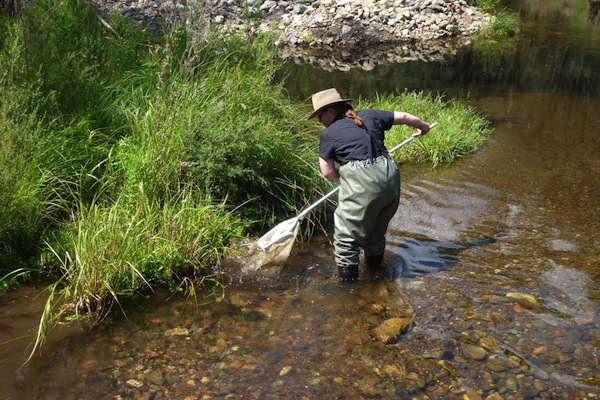Marcus Butler
23 December 2015: A new DNA library to assist scientists calculate the health of waterways based on the presence of aquatic animals is one of two University of Canberra research projects to be funded by the New South Wales Government.
The second project will assess the surviving populations of three species of endangered fish in NSW's freshwaters.
The NSW Environmental Research program has committed more than $234,211 to the two University of Canberra's ecology projects focused on freshwater ecology in the state.
Dr Sue Nichols, research fellow with the University's Institute for Applied Ecology (IAE) is leading the first project and has welcomed the $149,911 grant for this work.
"We'll be focused on developing a DNA library of aquatic invertebrates, insects, crustaceans, worms and snails that normally live in healthy rivers and creeks," Dr Nichols said.
"Being able to rapidly identify the presence of these animals gives us a good and quick snapshot of the eco-systems health. Our current method to get the same picture involves a lengthy identification process.
"At the moment if we want to know what invertebrates are present in a waterway, we need to collect samples and then examine them all to correctly identify them, but using a molecular DNA technique will be much cheaper and faster," she said.
Dr Nichols will work alongside University of Canberra colleagues Diane Gleason, Elise Furlan and Ben Kefford toward the three-year project.
The second project, which received $ 84,300 in funding, will see freshwater scientists use genetics to assess remaining populations of three species of critically endangered fish in New South Wales.
Endangered populations of Olive Perchlet, Darling Hardyhead and the Purple Spotted Gudgeon will be studied to determine if key populations are native to their current range or have been introduced from elsewhere.
Dr Peter Unmack, research fellow with the IAE, and leader of the project is hopeful it will restart the recovery efforts to conserve these three species.
"Despite all three species having once been widespread across NSW, their continued existence is far from assured," Dr Unmack said.
"Determining if populations of these species are native involves gauging how related individuals are to each other across their range. From this information we can begin to manage the genetic diversity of these populations and work towards recovery."
Dr Unmack will collaborate with Mark Adams from the South Australian Museum, Dean Gilligan from the New South Wales Department of Primary Industries Fisheries and Andrzej Killian from Diversity Arrays Technology on the three-year project.



